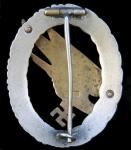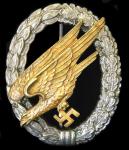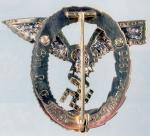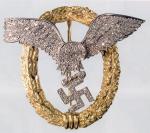-
Posts
3,397 -
Joined
-
Last visited
-
Days Won
3
Content Type
Profiles
Forums
Blogs
Gallery
Events
Store
Everything posted by J Temple-West
-
...so let's help. This applies to all collectors of awards, medals, badges... those familiar with the technical process of die striking Vs die casting, etc. Q. "could you please help me understand what to look for as far as knowing its been cast. thank you. i'm just trying to learn." Point of reference... http://gmic.co.uk/index.php?showtopic=16007&st=0 It's late here in the UK...so it's over to our US members, or as we like to call them, the night shift. Thanks in advance for any help.
-
Of course we can, Dave. That's what the club is all about. Tell you what I'll do...I think we've used enough of Jan's thread discussing other than his fine Juncker Para badge? I'll start a new thread on your badge and let the collecting community give you the benefit of their vast experience in explaining how to spot a cast copy. Link to the new thread.. http://gmic.co.uk/index.php?showtopic=16386 There are some extremely good castings of originals out there, and getting better all the time to the extent that other than the visual, detailed measurements have to be taken and compared to those of known originals (Clue 1.)... Yes, that's how bad it can get! So knowing what fakes, and their characteristics (cast or pure fantasy) are out there is just as important as learning the characteristics of originals.
-
There are a few Radio Operator/Air Gunner badges out there that are as yet unidentified, but I'm afraid that this one is not one of them. Each maker has its own characteristics and your badge being (Imo) a cast copy of an original buntmetal "Deumer" may look the part, but on closer inspection... incorrect hinge, soft features, signs of casting on the reverse, wrong metal. A side-by-side comparison will give you a good idea of the differences and what to look for when assessing a particular badge. Of course this is only one opinion. Let?s see what the other Luftwaffe collectors have to say. Comparison below.
-
At some point, the life of certain Deumer dies came to and end and Juncker started supplying Deumer with parts. This is when we see completed Juncker badges, still retaining the characteristic Deumer hinge (with grinding wheel marks) and catch assemblies, showing that Deumer, although supplied with Juncker parts, still assembled/finished these badges in-house. Anyway, I hope this all makes sense as I'm fighting, what my wife calls a 'man-cold' and the brain isn't working too well today...Atishoooo! Bless me! As to your Radio Op/Air Gunner badge. I have to say..It doesn't look good, but you never know!
-
In 1938, with the advent of war looming, Germany?s awards manufactures, fully aware of what was to come, prepared for the mass production of medals, awards and qualification badges to fill the ever increasing demands made by the Wehrmacht. New designs, for heavier badges were made, dies cut and production began. Imo, Juncker supplied Deumer with a new set of dies for their range of early war badges and Deumer assembled/finished these badges in-house...These badges, for the want of a better term, are known as ?All parts? by Deumer? Early war badges by Deumer
-
Coolldad, The short answer: you?re right? There was a lot of collaboration, especially between the two long established firms, ?Juncker? and ?Deumer.? The three main 1st pattern badges (Pilot, Observer and Combined Pilot/Observer), instituted on the 26th March 1936, were produced by these firms from what we assume to be in-house dies. Juncker Deumer
-
John, The "R. B.Nr" (Reichs-Betriebs-Nummer) is a Luftwaffe code assigned to factories and workshops serving the war economy until 1945.. The maker mark (or logo) is usually found on the blade... this, of course, now worn away on your example. This one of mine is by "SMF" the most commonly found maker of these knives.
-
As you say, Rick?.?Nice badge?? I don?t know who it went to, but I know where it?s been. I?ve followed the history of this badge since it first appeared some years ago. It was surrounded in controversy then, and when it exchanged hands a few months ago, it once again caused quite a stir. Being a unique badge, produced as a private purchase piece, and having no provenance, there is no definitive way that such a badge can be authenticated?. You either like it or you don?t. Personally, I like it, but I?m not sure if owning such a badge would give me that warm, confident feeling that known originals do. I suspect its last owner had similar feelings.
-
Hi Mark.. Some thoughts before I hit the hay. Typical pre-1945 reverse set-up for an ?Assmann? zincer. A nice flat back to both wreath and bird (definitely not a casting) and overall one of the cleanest I?ve seen. I take it that the pin is steel? The rivets are a bit of an enigma as I would have expected flattened or domed rivet heads on this type of badge? they look to have been worked on at some stage in an attempt to tighten them, so I suppose we could say, repairs? I?m trying to place it in the timeline; the maker mark says very late, the wreath indicates that it was produced pre- ?1?/?2? marked, one piece, wreath types (as used on Observer and Para badges) which were initially marked with the standard ?A?. Would this mean that his was an existing stock of PB parts assembled right up until the end, maker marked with both the earlier A then with the later A L/64? The maker mark with the earlier badge is the confusing factor for me! It has been a long day?The brain is closing down? Ize off...see you in the morning. ZZZzzzzZZzzz
-
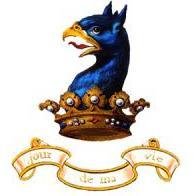
Luftwaffe Pilot Badge
J Temple-West replied to dante's topic in Germany: Third Reich: Wehrmacht Medals, Decorations & Awards
Hi Dante The pictures are a little small but I can see no problems with the Assmann. A value... if you worked on ?450 you wouldn't be far off. The name is interesting. If memory serves, there was an officer by the name of "Wilhelm Hergert" who held the Knight's Cross with Oak Leaves. It's worth asking if the badge comes with any paperwork. -

Luftwaffe Hi Ho 'Silver'!
J Temple-West replied to ERIC's topic in Germany: Third Reich: Wehrmacht Medals, Decorations & Awards
I second that!










